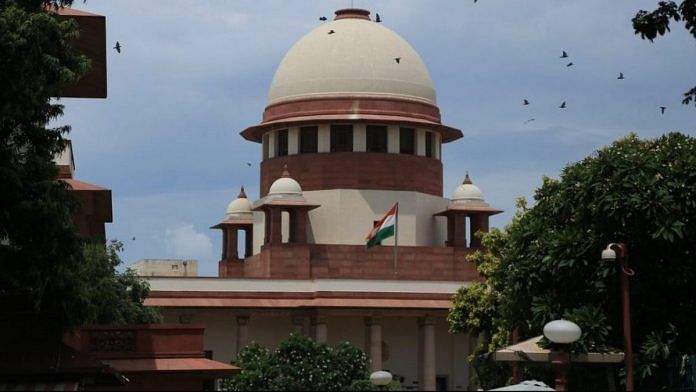Systems are averse to change and the criminal justice system in India is no exception. Technophobia among the police, courts and the undertrials is rampant. The coronavirus pandemic has necessitated social distancing, thus forcing authorities to resort to remote production of the accused. A curation of such experiences over the past few months will help improve the processes and go a long way in mitigating the apprehensions of those resisting change — a faster adoption of the video conferencing technology for justice delivery.
Also read: How technology gave LIMBS to Indian judiciary — an app to monitor government cases
A mindset problem
The major reasons for the slow adaptability have possibly been as Justice B.N. Srikrishna, noted, “… a mindset problem”.
The detailed set of guidelines laid down by the Delhi High Court to conduct video conferencing clearly state that “the use of video-conferencing in any particular case must be consistent with furthering the interests of justice and should cause minimal disadvantage to the parties” and that “all statutory provisions applicable to such proceedings including that of Information Technology Act 2000 and Indian Evidence Act 1872 shall be applicable at par in such video conference”.
The improvement in the adoption of technology inside India’s courtrooms will act as a prime mover in the advancement of the delivery of criminal justice.
Also read: Peeping parents, sleeping students, bullying — online classes are a nightmare for teachers
The implementation hurdles
In order to understand the apprehensions around the adoption of technology, it will be appropriate to discuss certain issues that are key to video conferencing protocols. This will ensure that “not only justice is done, justice should be seen to be done”.
- Due process of law:Talking to a camera does not illicit the feeling or experience of a personal hearing. Not being present gives rise to various apprehensions. Added to it, a discussion over the screen may not be understood by many.
- Credibility:The quality of communication between the magistrate and the accused is key to ensuring credibility, which is hampered substantially in a video communication.
- Jurisdiction and identification:Serving of judicial orders such as summons becomes problematic if the witness stays beyond the jurisdiction of a court. Authorities will also face issues in establishing the identity of the person making the deposition.
- Technical snags:Slow internet speed, frequent video/audio outages make the experience frustrating and lead to delays. The issue gets compounded if there is more than one party involved — the on-screen visibility gets reduced.
- Simultaneous hearings:Conducting simultaneous hearings in different courts is yet another challenge because the number of video conferencing chambers in correctional homes or jails are limited. Justice is delayed when more inmates have to be presented and different courts require a presentation at the same time.
- Confidentiality/unauthorised recordings/people’s right to access:All these issues need to be deliberated and appropriate mechanisms must be established.
- Private consultations:Many hearings require a private consultation between the accused and his/her lawyer or confidential consultations between lawyers and judges. These become a casualty in such a setup.
- Documents:Perusal and sharing of documents as well as questioning on the basis of those documents also suffers.
- Missed opportunity:Visit to courts gives many accused inmates an opportunity to meet their family, something they are deprived of in an online arrangement.
The general guidelines framed by the Delhi High Court are quite detailed and address most of the issues highlighted.
Some of the technical issues related to identification, speed, numbers, confidentiality, private consultations and document presentation can be improved upon by learning from the experience of the education sector. Many universities have conducted online exams during the pandemic while facing similar challenges. Similar technologies and protocols can easily be adopted and tailored to the requirements of the courts.
Video conferencing is a step in the right direction. But the concerns expressed by the judges, undertrials, and police among others need to be addressed too.
Also read: Supreme Court to continue hearing of matters through video-conferencing
Slow transition
The pandemic has added a sense of urgency towards adoption of video conferencing technology inside India’s courtrooms, but the debate around the issue has been growing for at least a decade now, albeit at a slow pace.
The Supreme Court had in 2003 upheld the decision of a trial court in Maharashtra to allow the recording of a deposition via video conferencing. In 2008, the Code of Criminal Procedure (CrPC) vide an amendment to section 167 (2) (b) included “electronic video linkage” as an alternative method for the production of an accused in court. India is also moving towards implementing the Interoperable Criminal Justice System (ICJS), an ambitious pan-India project to interlink the five pillars of the criminal justice system — police, courts, prisons, prosecution and Forensic Science Laboratories.
The Policy and Action Plan Document of the e-courts project contemplated the use of video conferencing and recording facility for courts and jails. As per the Objectives Accomplishment Report (2019) of the e-courts Project, video-conferencing equipment has been provided to 3,240 court complexes and 1,272 jails. The progress is a clear indication that the policy makers and the judiciary have been well on the path to integrate video conferencing as a part of the judicial process.
The author is an IPS Officer and currently serving as ADG (Correctional Services) West Bengal. Views are personal.




The article captures the dire need of adoption of technological change in the justice courts of India. The commercial rollout of 5G networks may help in addressing the technical challenges upto a significant extent. As for the justice system and policy makers, it is time to eradicate technophobia and incorporate change in their working for a smoother and easier delivery of justice.